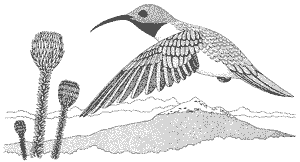 “Wayfarer, there is no path, you make the path as you go.”
“Wayfarer, there is no path, you make the path as you go.”
|
|
| English | Español | Deutsch | Français | Nederlands |
THE COUNTRY
- Why Ecuador?
- Slide Show
THE BOOK
- Foreword
- Preface
- Acknowledgments
- Table of Contents
- Trek Summaries
- Index
- About the Authors
- About the Publisher
A SAMPLE TREK
- Overview
- Route Description
- Topographic Map
- Elevation Profile
HOW TO BUY
THE BOOK
UPDATES
FEEDBACK
LINKS
CONTACT US
- The Authors
- The Publisher
© 2002-07 Kunstaetter
(From Trek 19: Crater of El Altar)

Scientists remain uncertain about the exact date and circumstances of El Altar's massive crater collapse, but the native people of Ecuador have their own explanation. They begin by ascribing a personality—and a gender—to each and every mountain.
How do you tell the sex of a volcano? Just look. The chuquiragua, a small bush with bright orange flowers, grows only on the slopes of male volcanoes, while females are devoid of this plant. The significance of this botanical correlation is unclear, but there is universal agreement about the gender of Ecuador's major summits. Chimborazo is male and often dubbed taita, which means “father” in Quichua, while its companion to the northeast is called Mama Tungurahua.
El Altar is another male volcano. Local legend has it that this young upstart had his designs on Tungurahua, thus infringing on Chimborazo's long-standing relationship with her. Taita Chimborazo, the largest and most powerful of Ecuador's mountains, would not stand for such effrontery. He lifted an enormous club and smote El Altar's crown, producing the great gash in its crater.
As you walk through the gaping wound in the crater of El Altar, look back for a glimpse of Chimborazo. High above the wrinkled plains and valleys they dominate, Ecuador's volcanoes inhabit a world of their own. This insight was perhaps embellished by native lore, but a cloudless day is certain to convince any trekker of its validity.
It is an important food source for the Chimborazo Hillstar hummingbird.
(Illustration by Kevin Burkhill)


